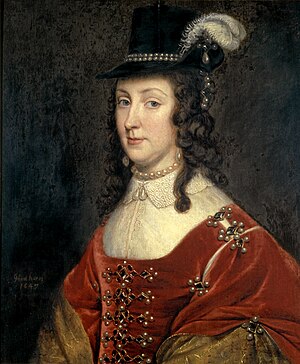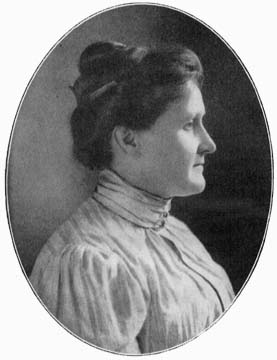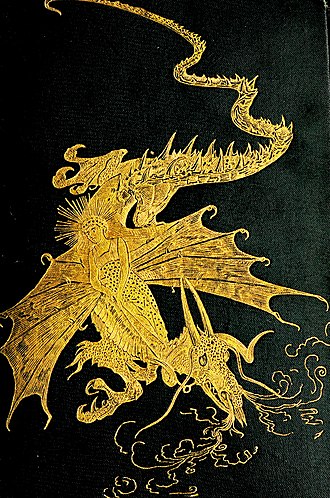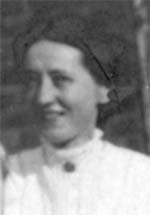Discover Your Roots
SIGN UPDiscover Your Roots
SIGN UPLeonora is a lovely female name of Italian origin, meaning "Light." It is a variation of the name Eleanor and was quite popular in the 19th century in Western countries. While its popularity has declined, it continues to be used, with 64 newborn American girls being given the name in 2020. Notable individuals bearing this name include New Zealand actress Leonara Elizabeth Grant, seventeenth-century musician and composer Leonora Baroni, and Mexican surrealist painter Leonora Carrington. Additionally, the name has appeared in various fictional works, such as the 2013 videogame GTA V and the Ford Madox Ford novel The Good Soldier. Its association with light makes it a meaningful and elegant choice for a baby girl.

Mary Leonora Carrington (6 April 1917 – 25 May 2011) was a British-born surrealist painter and novelist who became a naturalized Mexican citizen. She spent most of her adult life in Mexico City and was a prominent figure in the surrealist movement of the 1930s. Carrington also played a crucial role in the women's liberation movement in Mexico during the 1970s.Born into a wealthy Roman Catholic family in Lancashire, England, Carrington's early life was marked by rebellious behavior and a strong passion for art. Despite her father's opposition, her mother supported her artistic aspirations. Carrington's encounter with Surrealist paintings in Paris at the age of ten ignited her lifelong fascination with the movement.Carrington's association with German surrealist Max Ernst significantly influenced her artistic development. The couple settled in southern France, where they collaborated and supported each other's work. However, World War II and Ernst's arrest by the Nazis led to a period of personal struggle for Carrington, including a stay in an asylum.In addition to her artistic contributions, Carrington's legacy includes her advocacy for women's rights in Mexico. Her unique life and artistic vision continue to inspire and intrigue art enthusiasts and feminists around the world.

Leonora Christina, Countess Ulfeldt, (8 July 1621 – 16 March 1698) was the daughter of King Christian IV of Denmark and wife of the Steward of the Realm, Count Corfitz Ulfeldt. She gained fame for her posthumously published autobiography "Jammers Minde," written during two decades of solitary confinement in a royal dungeon. Her intimate account of major historical events in Europe, intertwined with her experiences as a political prisoner, has captivated popular interest and scholarly respect, becoming the stuff of legend in Danish literature and art. Raised in Copenhagen's royal palace, Leonora Christina's marriage was part of her father's strategy to consolidate his dynasty's power. Despite her morganatic status, she was married off to Ulfeldt at the age of fifteen. The couple's position faced challenges when her half-brother ascended the throne, leading to their exile and life as fugitives. Leonora Christina's life and trials have left an indelible mark on Danish history and continue to inspire fascination and admiration.

Leonora Piper, born as Leonora Evelina Simonds, was a renowned American trance medium known for her involvement in Spiritualism. Born on June 27, 1857, in Nashua, New Hampshire, Piper's psychic abilities were evident from a young age. After marrying William Piper and settling in Boston, her abilities continued to develop, leading her to become a paid medium and gaining attention from prominent investigators in the field of psychic research.Piper's mediumship was the subject of intense interest and investigation by organizations such as the American Society for Psychical Research and the Society for Psychical Research in Britain. Notable figures like William James, Oliver Lodge, and G. Stanley Hall were among those who studied her. While some researchers suggested she used mentalist techniques such as cold reading, muscle reading, and "fishing" to gather information about séance sitters, others, like William James, expressed belief in her abilities, albeit without attributing them to communication with spirits.Despite skepticism and criticism, Piper's work as a trance medium and later as an automatic writer earned her a considerable income. She passed away on June 3, 1950, leaving behind a legacy as one of the most widely studied mediums of her time. Her contributions to the field of spiritualism continue to be a subject of interest and debate.

Leonora Blanche Lang (née Alleyne; 8 March 1851 – 10 July 1933) was an English writer, editor, and translator, best known for her collaboration with her husband, Andrew Lang, in creating The Fairy Books series. Born in Clifton, Bristol, to a family with ties to Barbados, Lang received a standard education before marrying Andrew Lang in 1875. The couple lived and worked in London and Edinburgh, establishing connections in literary and artistic circles. Despite the misconception that Andrew Lang solely authored the Fairy Books, it was Nora who primarily translated and adapted the tales from various languages. Her contributions to the series, including The Green Fairy Book and others, significantly impacted the public perception of fairy stories, making them suitable for children and worthy of critical analysis.Lang's influence extended beyond the Fairy Books, as her translations and writings on Russian history, along with her reviews for periodicals, showcased her diverse literary talents. After Andrew's passing in 1912, Lang continued her pursuits, mastering the Russian language and maintaining an active literary presence. Her legacy continues to inspire renowned authors, such as J.R.R. Tolkien and Margaret Atwood, demonstrating the enduring impact of her literary contributions.

Leonora O'Reilly (February 16, 1870 – April 3, 1927) was a prominent American feminist, suffragist, and trade union organizer, known for her tireless efforts in advocating for women's rights and labor reform. Born into a working-class family of Irish immigrants, O'Reilly's early life was marked by hardships, as she started working as a seamstress at the age of eleven after leaving school.O'Reilly's dedication to the cause led her to become an organizer and recruiter for the Women's Trade Union League (WTUL) from 1903 to 1915. She fearlessly spoke for labor reform and women's suffrage on the streets of New York, representing women at various public forums and governmental committees.Despite facing personal tragedies, including the loss of her adopted child, Alice, O'Reilly remained steadfast in her commitment to social and political activism. She played a pivotal role in the New York Shirtwaist Strike and was a member of the Socialist Party of New York, advocating for equal pay and fair wages for women workers.O'Reilly's influence extended beyond her direct activism, as she also taught courses at New York's New School for Social Research, focusing on the theory of the labor movement. Sadly, her life was cut short at the age of 56 due to heart disease, but her legacy as a trailblazing Irish-American female leader continues to inspire generations.Throughout her life, O'Reilly tirelessly champion
All images displayed on this page are sourced from Wikipedia or Wikimedia Commons.We use these images under their respective Creative Commons or public domain licenses. Wherever applicable, author attributions and license information are provided. If you believe an image is used incorrectly or outside its license terms, please contact us so that we can review and correct the issue.